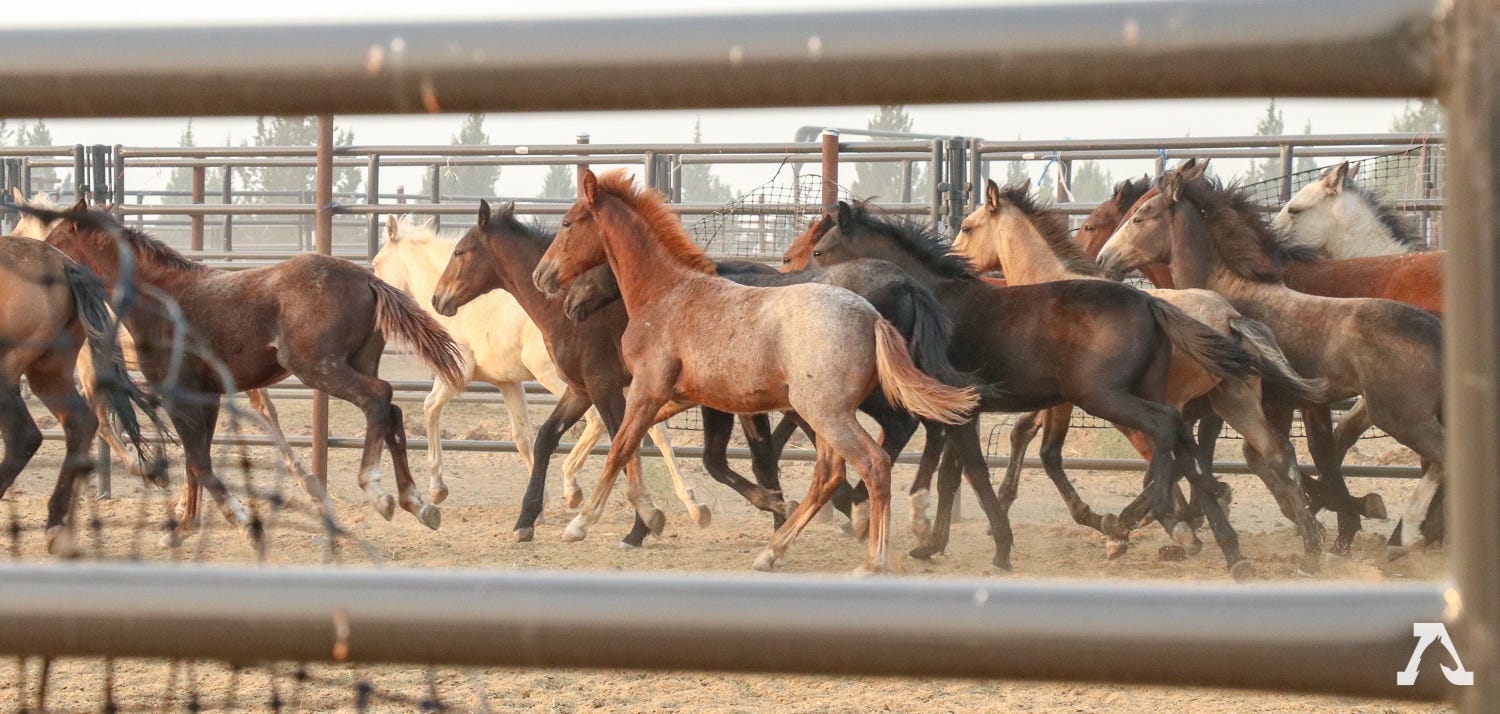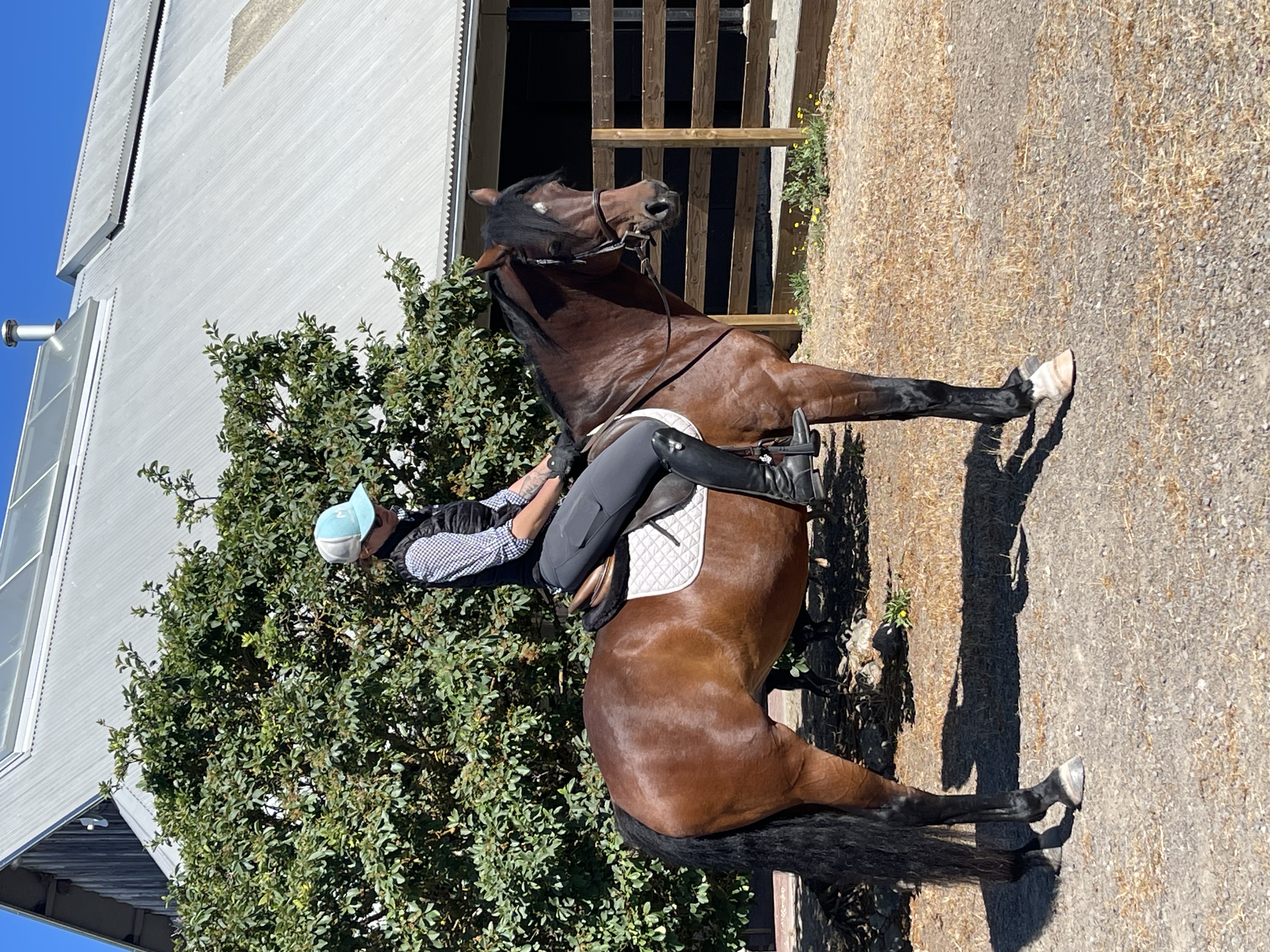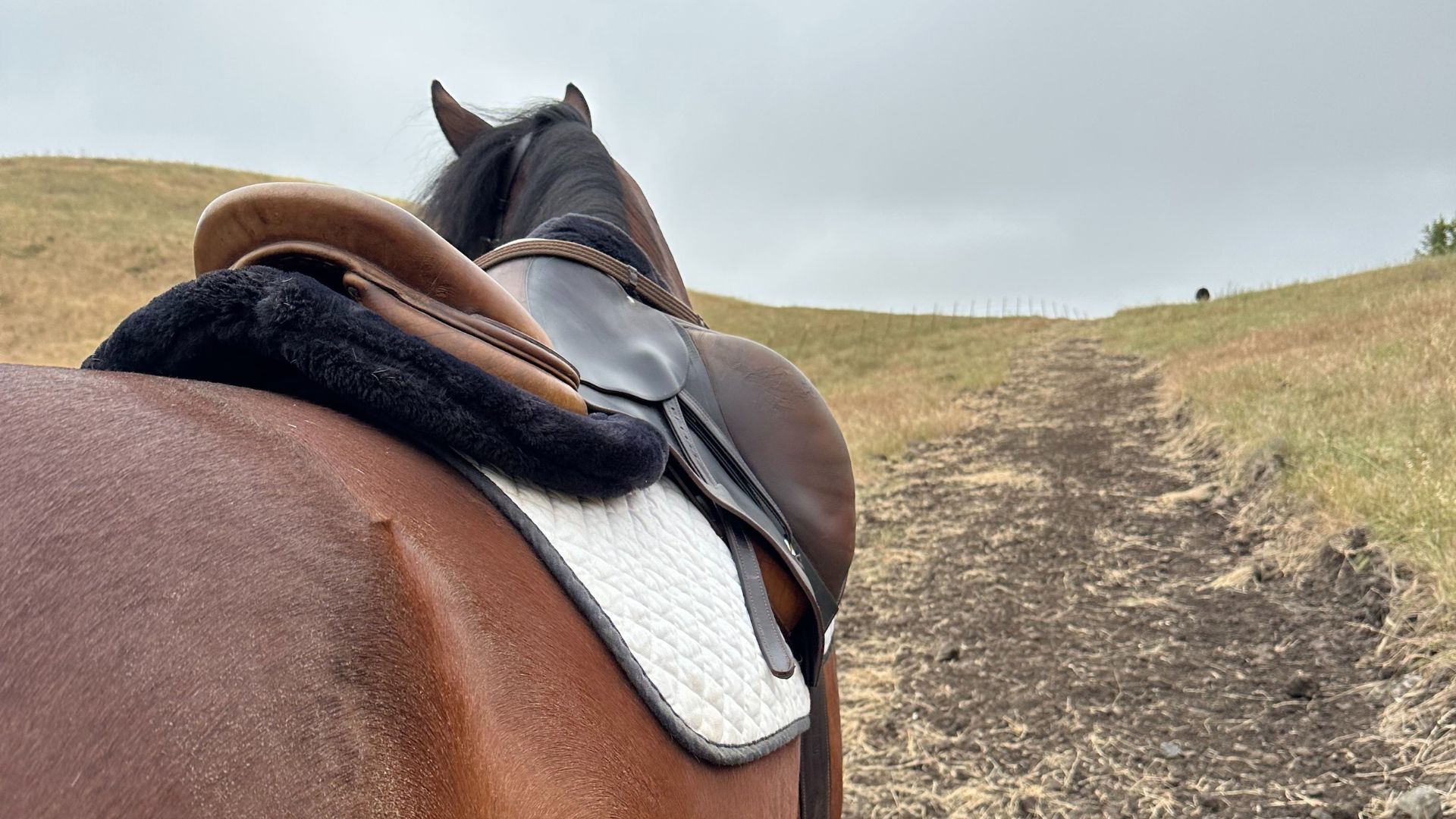By Boo Geisse, Volunteer to AWHC
Selena is a special horse—not just because of her soft eyes, kind nature, and comfortable gaits-- but because she has survived against amazingly dire odds.
Selena’s mother, along with nearly thirty other pregnant mares, was rounded up in 2016 by the Forest Service in Modoc County, California, from a Wild Horse Territory(WHT) known as Devil’s Garden. Shortly after the roundup, the mares were transferred to a Bureau of Land Management (BLM) corral where 28 foals were born.

Several months later, now weaned from their mothers, every single foal developed chronic colitis (inflammation of the colon). The BLM treated these young mustangs with an aggressive round of antibiotics, the severity of which overwhelmed their fragile bodies. Selena was one of the survivors.
Left with only two companions, Selena awaited her fate until the American Wild Horse Campaign’s (AWHC) Executive Director, Suzanne Roy, came across her. On a mission to investigate the tragic death of the two dozen foals, Suzanne discovered that only Selena was left unadopted, and she knew she couldn’t leave her behind. She contacted AWHC Board President, Ellie Phipps Price who agreed to take her into the sanctuary and training center she co-founded, Montgomery Creek Ranch (MCR) in Elk Creek California.
At nine months of age, Selena was rescued by MCR, where she was halter broken and gentled. Now living at MCR’s satellite location in Sonoma, Selena has over a year of under-saddle training, and can be ridden in both English and Western tack. She has even started cantering over small jumps!
Selena, named after popstar Selena Gomez for her soulful eyes and beauty, is trail friendly, easy to load, stands in the crossties and for the farrier, and is a delight to have in the barn. Fun to ride, pretty to look at, and very cuddly, Selena will make somebody a fantastic partner.
While hers is a success story, and one of remarkable endurance and survival, Selena is in the minority of foals in the BLM’s care. As we enter into roundup season, where the agency uses low-flying helicopters to stampede herds of horses off public lands, concern for young mustangs is at an all-time high.
Roundups chase families of mustangs for ten, sometimes twenty miles at a time, often in sweltering heat. Terrified, horses run for their lives, often ending up injured or dead. Those who do make it into holding pens are forced into extremely tight quarters, where further injury and death can occur.
 While this practice is dangerous for full-grown mustangs, it’s lethal for foals. In the chaos of the stampede, foals are often left behind, guaranteeing a slow death alone in the wild. Many who manage to stay with their mothers perish from “capture myopathy”-- death from the stress and physical exertion of the capture process. In one 2022 roundup, more than a dozen foals were euthanized because their soft hooves were completely run off.
While this practice is dangerous for full-grown mustangs, it’s lethal for foals. In the chaos of the stampede, foals are often left behind, guaranteeing a slow death alone in the wild. Many who manage to stay with their mothers perish from “capture myopathy”-- death from the stress and physical exertion of the capture process. In one 2022 roundup, more than a dozen foals were euthanized because their soft hooves were completely run off.
When the BLM does not suspend its helicopter roundups during foaling season, the results are predictably heartbreaking. And by choosing to round up herds of horses with young foals, they make a clear statement about how the agency care for America’s wild horses.
Though she nearly died, Selena was lucky. She was born in a holding pen, and thus escaped a brutal roundup. But the fate of this year’s wild foals is grim if the BLM continues business as usual.
Boo Geisse is the barn manager and rider at MCR's satellite location in Sonoma. She has an MFA in Creative Writing from CSU.


